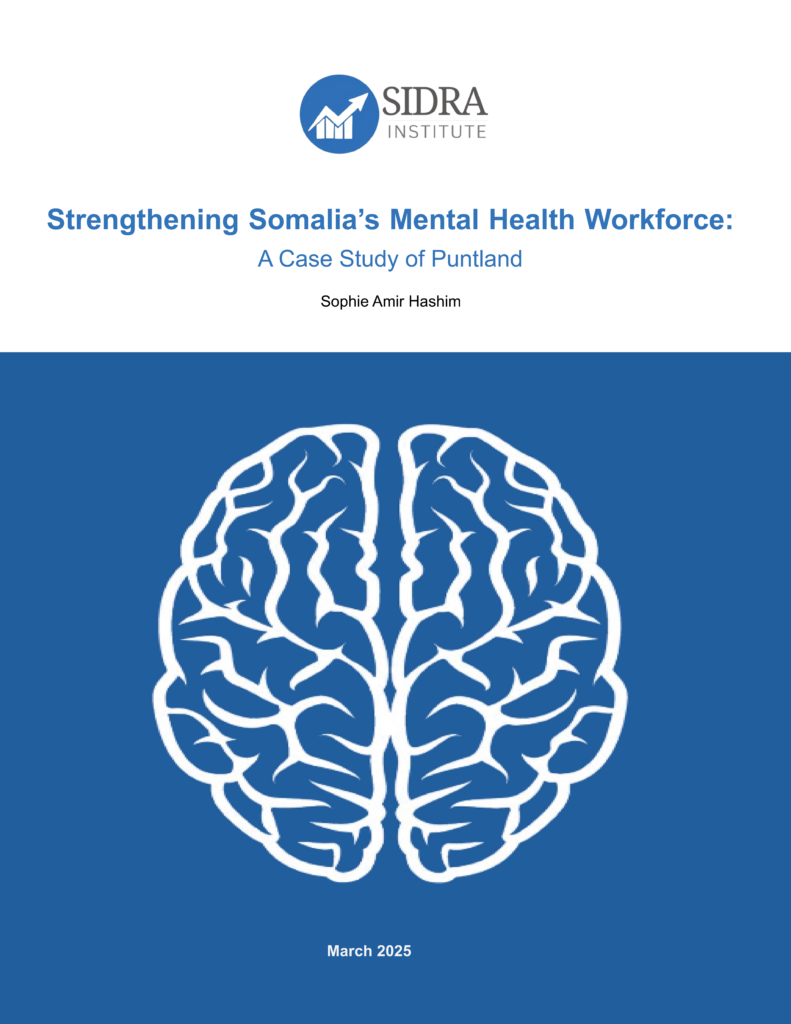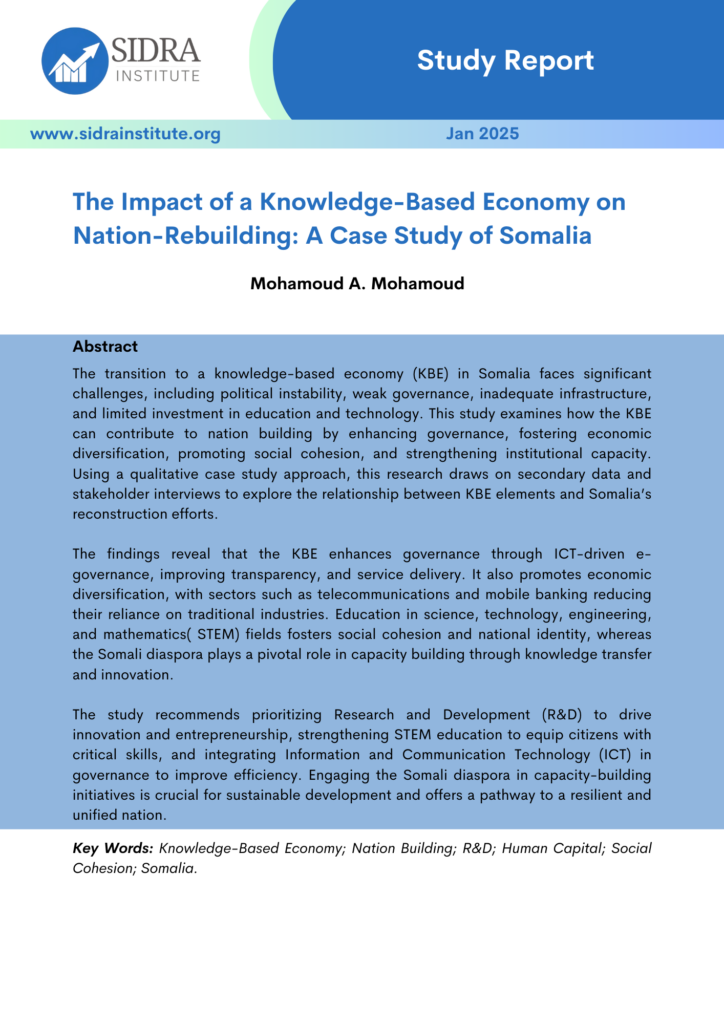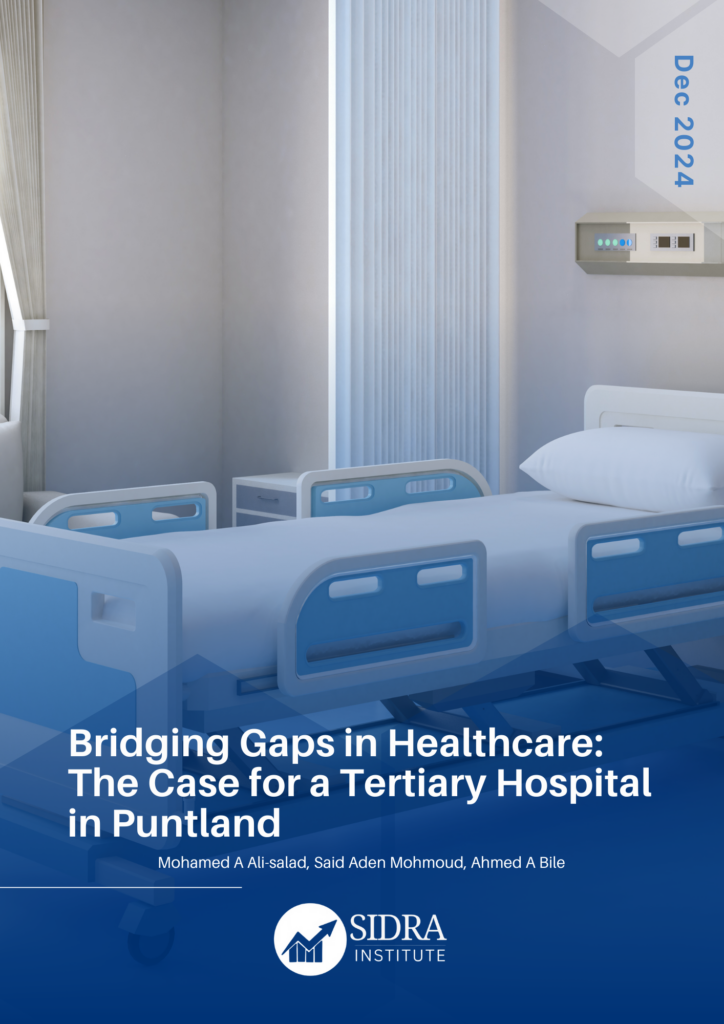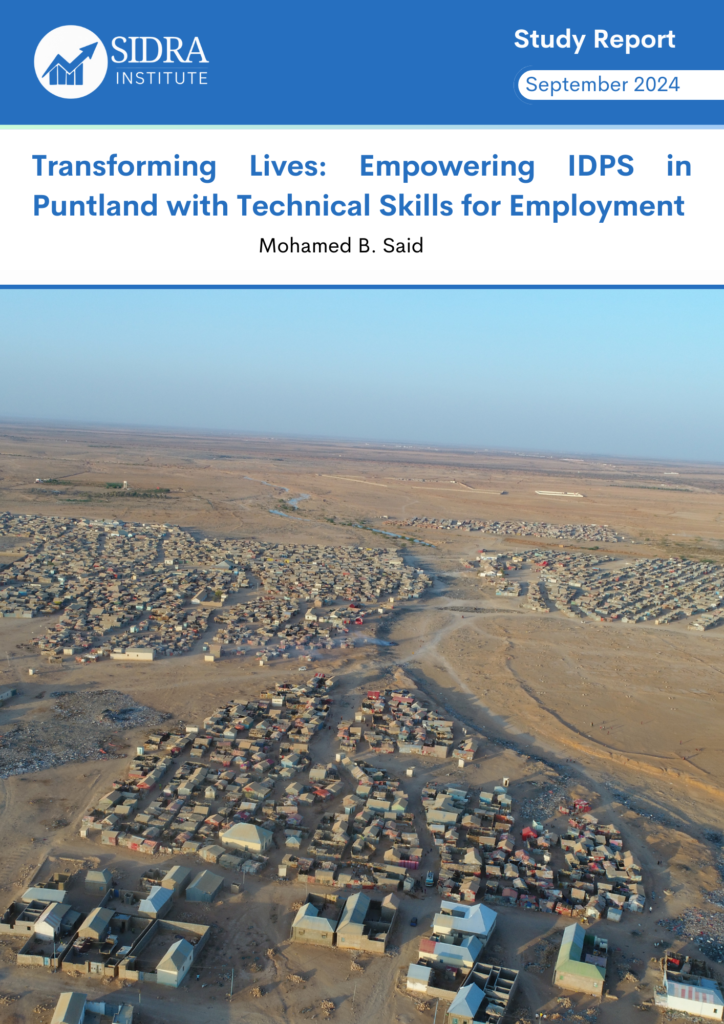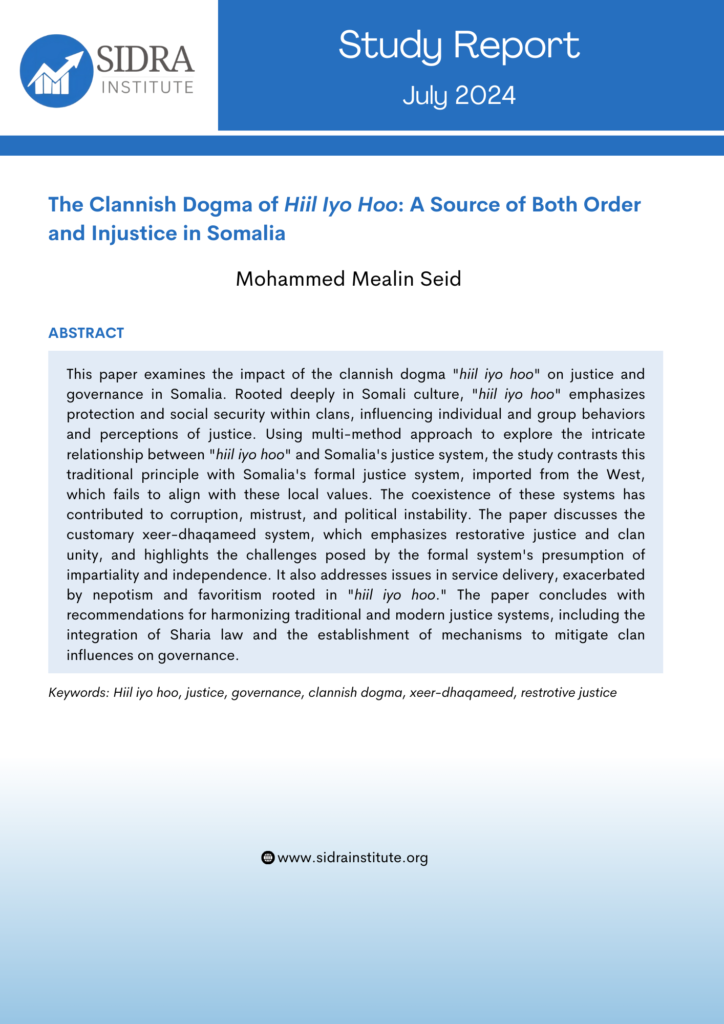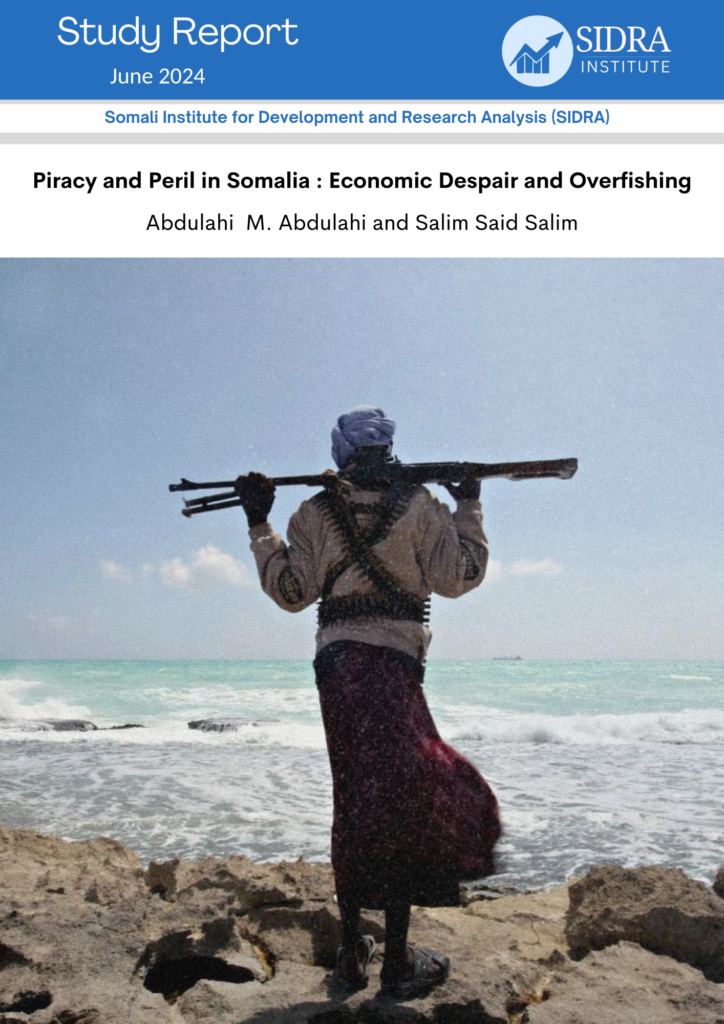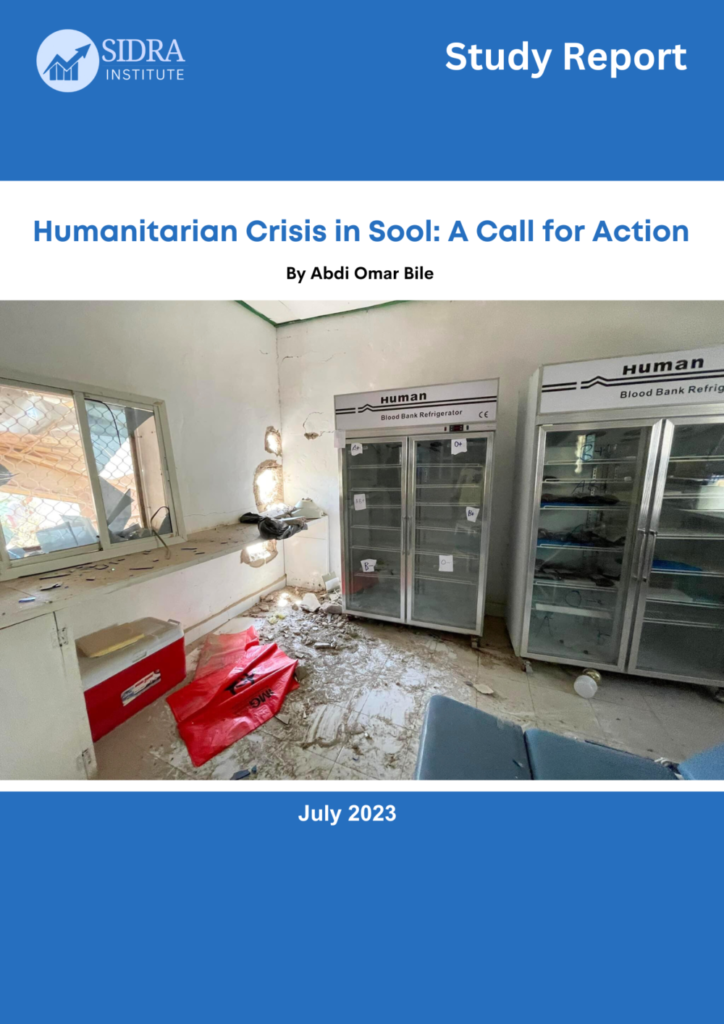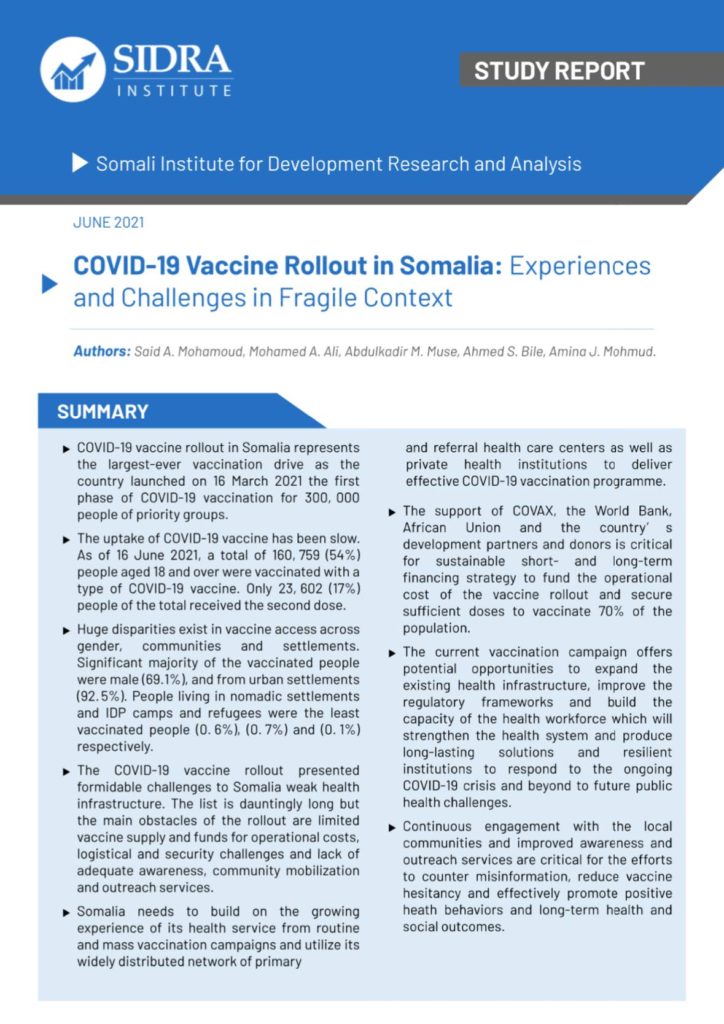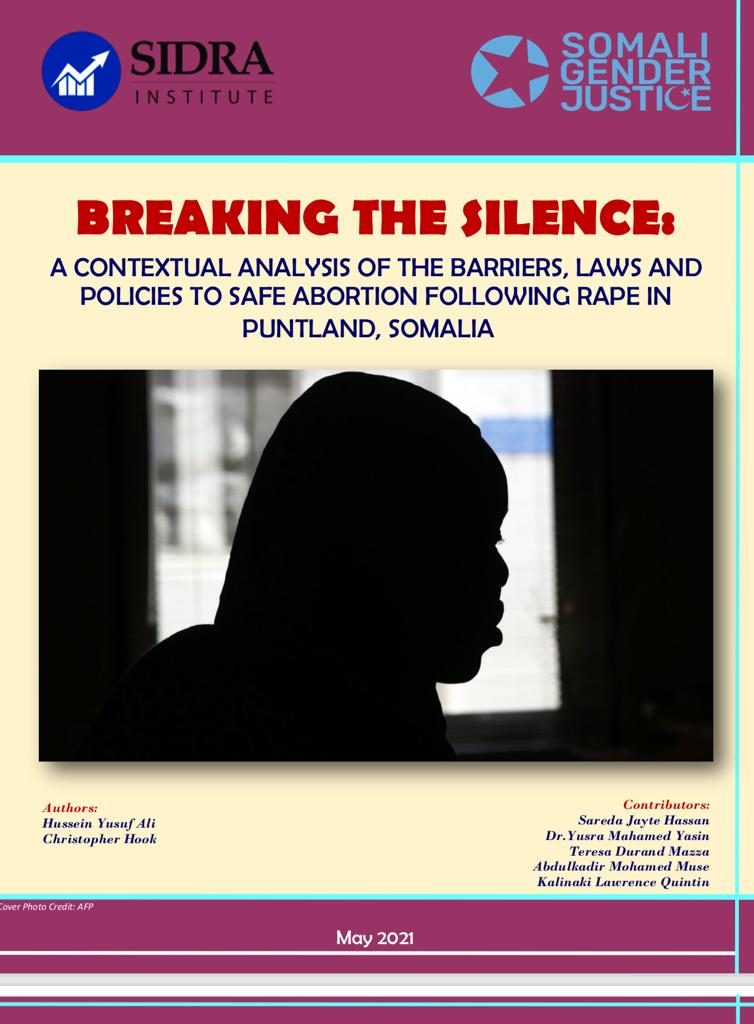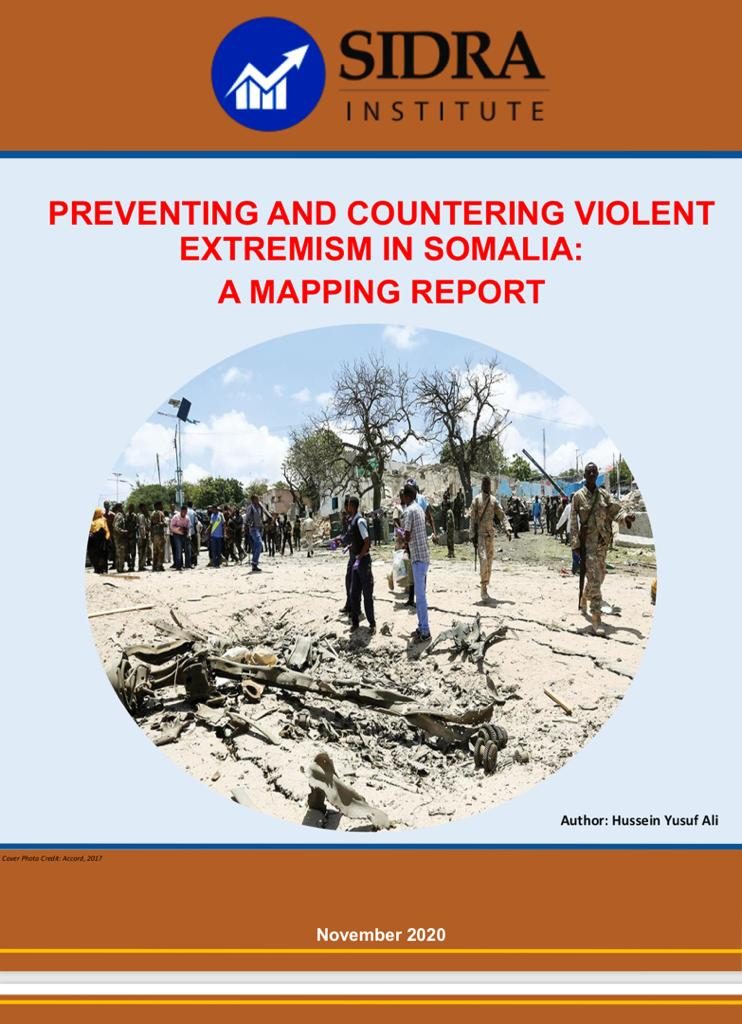Strengthening Somalia’s Mental Health Workforce: A Case Study of Puntland
The global shortage of mental health professionals is particularly severe in countries such as Somalia, revealing the urgent need for innovative solutions. This study investigated the barriers to the mental health workforce development in Puntland, Somalia, focusing on inadequate training programs, financial constraints, and cultural resistance to mental health careers. Using a qualitative research design, Semi-structured interviews were conducted with nine mental health professionals from Puntland, Somalia using a qualitative research design. The findings revealed severe infrastructure deficiencies, an absence of specialized training programs, and a widespread stigma discouraging entry into the field. Government inaction, underfunding, and cultural misconceptions further limit access to quality mental health services and restrict professional development in this sector. To address these challenges, this study underscores the urgent need for government-led policy reforms, including investment in mental health education, workforce development, and the integration of psychiatric services into Somalia’s broader healthcare system. Additionally, targeted public awareness campaigns are essential for reducing stigma and fostering cultural acceptance of psychiatric care. Without substantial policy interventions and long-term financial commitments, Somalia’s mental health crisis will persist, leaving vulnerable populations without access to essential resources.
Strengthening Somalia’s Mental Health Workforce: A Case Study of Puntland Read More »

